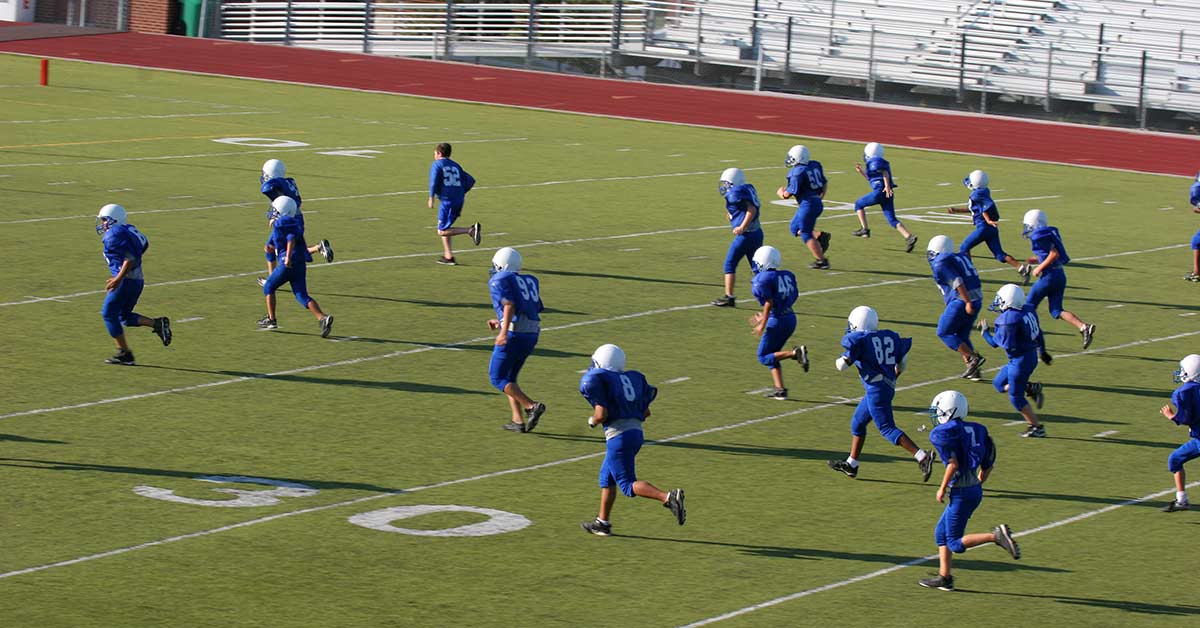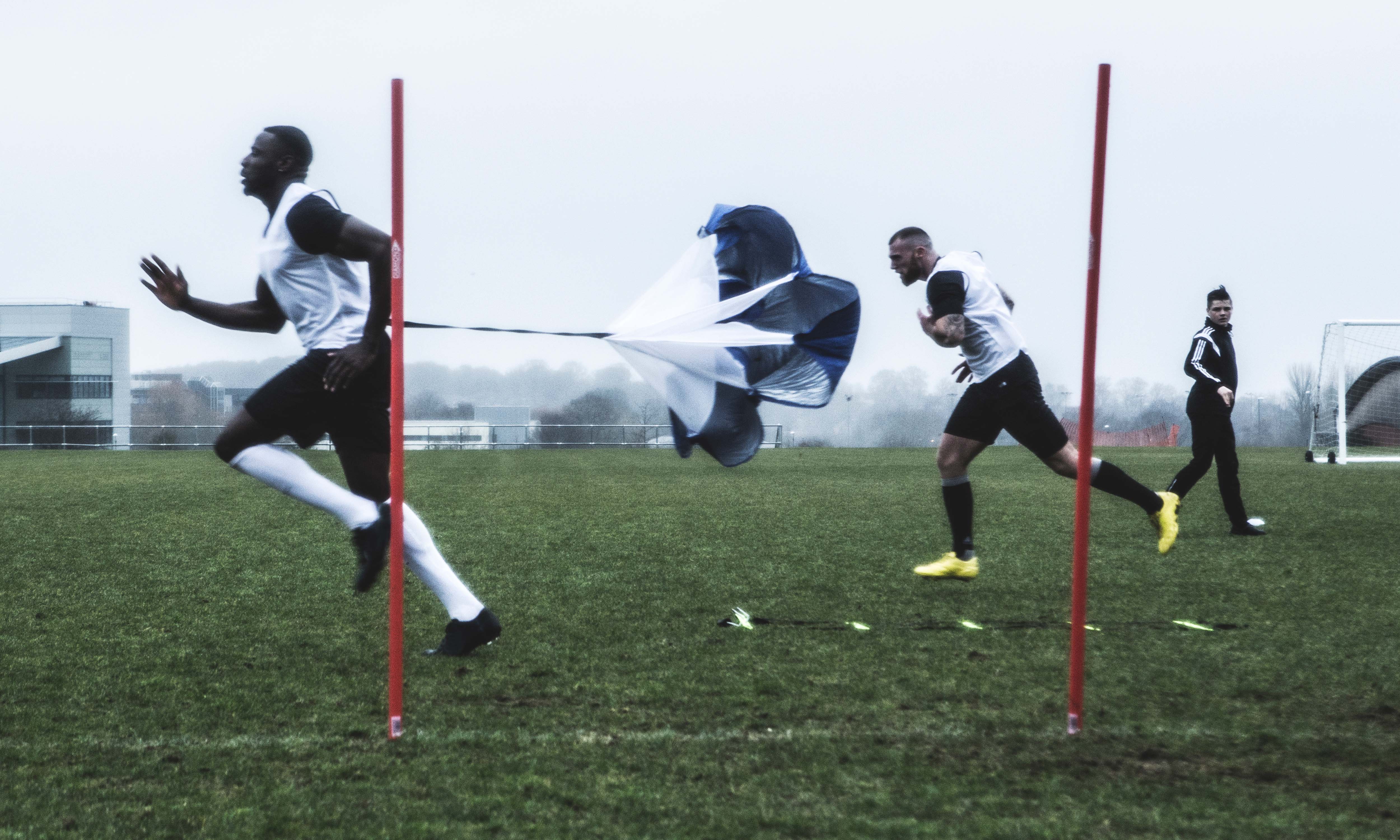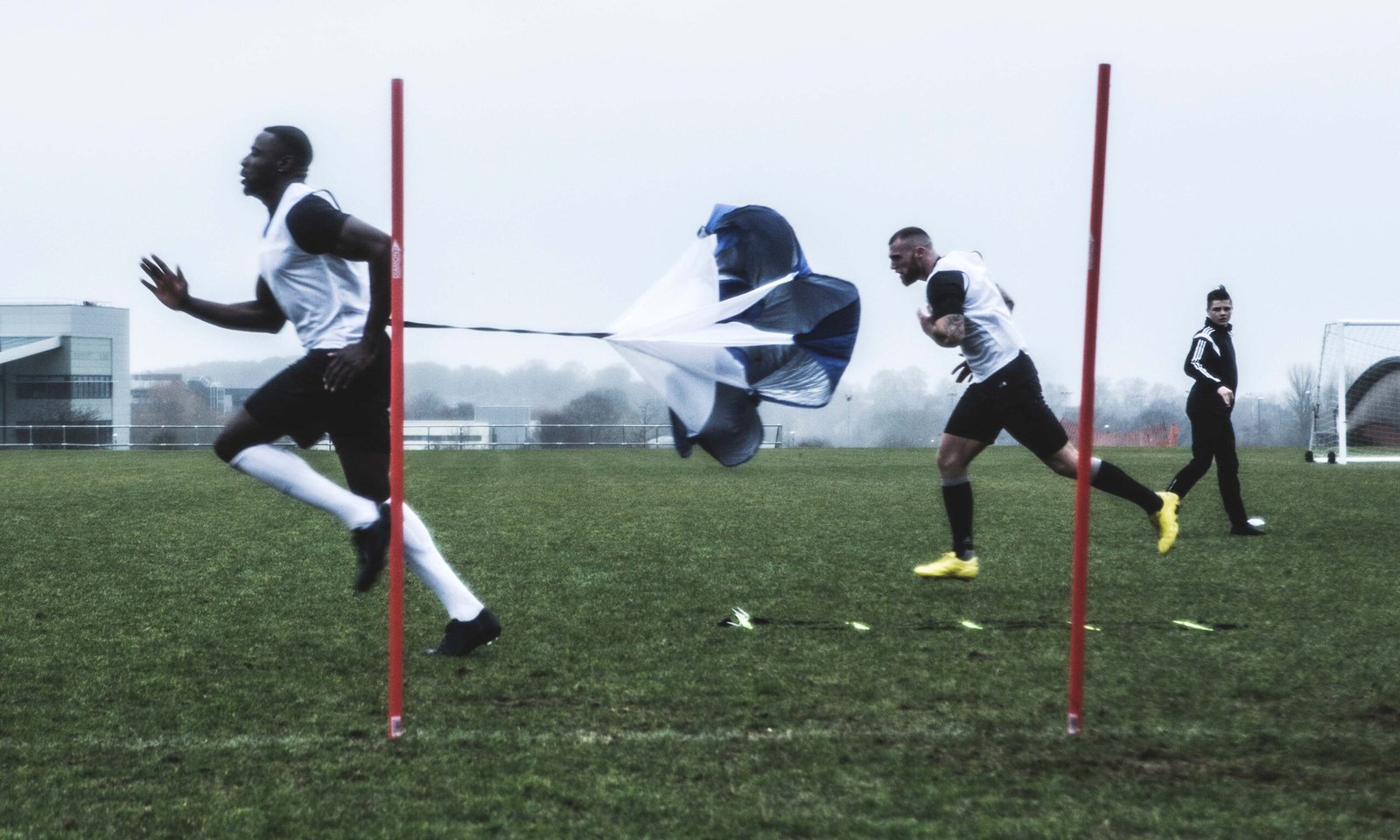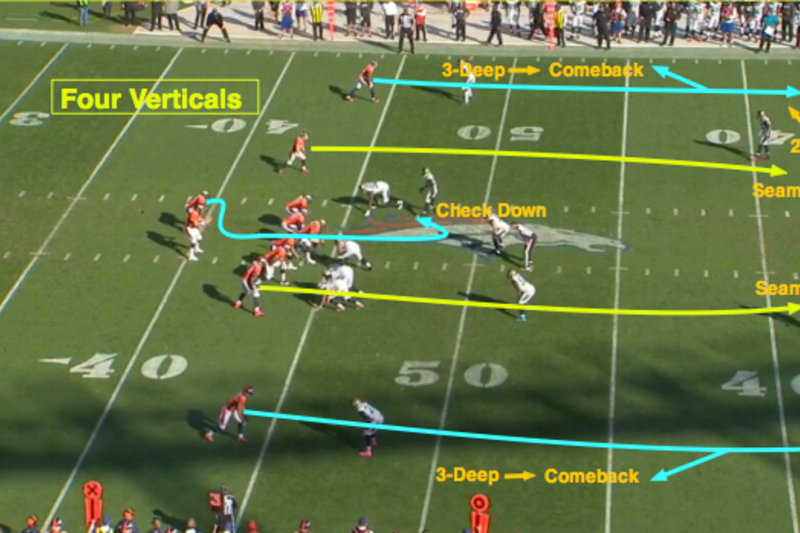Conditioning in football means preparing players physically and mentally. It involves exercises and drills to boost performance.
Football conditioning is crucial for success on the field. It focuses on strength, endurance, speed, and agility. These elements help players perform better and reduce injury risks. Coaches design specific programs to meet team needs. These programs include running, weight training, and flexibility exercises.
Mental conditioning is also vital. It helps players stay focused and confident during games. Understanding conditioning can improve a player’s overall game. It is an essential part of football training. In this blog, we will explore the different aspects of conditioning in football. This will help you understand its importance and how it benefits players.
Introduction To Conditioning
Football conditioning is a key aspect of a player’s performance. It involves exercises and training routines to enhance physical abilities. Conditioning helps players maintain stamina, strength, and agility. These elements are crucial for peak performance on the field. Below, we delve into the importance and key components of football conditioning.
Importance In Football
Conditioning boosts a player’s endurance. It helps them stay active throughout the match. Players with good conditioning can run faster and longer. They recover quicker from high-intensity actions. Good conditioning reduces the risk of injuries. It also improves a player’s mental toughness. They can stay focused and perform better under pressure. Overall, conditioning is essential for a player’s success.
Key Components
Football conditioning includes various components. First, cardiovascular endurance is crucial. It helps players maintain high energy levels. Second, strength training builds muscle power. It enables players to tackle and resist tackles. Third, flexibility exercises prevent injuries. They improve a player’s range of motion. Fourth, speed and agility drills enhance quick movements. Finally, proper nutrition supports all these components. A well-balanced diet fuels the body and aids recovery. Together, these components form a comprehensive conditioning program.

Credit: simplifaster.com
Types Of Conditioning
Football conditioning is vital for peak performance. It builds strength, speed, and endurance. There are different types of conditioning, each serving a unique purpose. Understanding these types can help players excel on the field. Let’s explore the main types of conditioning in football.
Aerobic Conditioning
Aerobic conditioning improves endurance. It involves activities that keep the heart rate up for long periods. Examples include running, cycling, and swimming. These activities help players sustain energy during a match. They also aid in faster recovery between plays.
Anaerobic Conditioning
Anaerobic conditioning focuses on short bursts of high-intensity effort. It includes sprints, weight lifting, and high-intensity interval training. This type helps players improve their speed and strength. It is crucial for quick movements and explosive power. Anaerobic exercises often have short rest periods.
Strength Training
Strength training is a vital part of conditioning in football. It helps players build muscle, increase power, and prevent injuries. This section will explore essential aspects of strength training, focusing on core exercises and weightlifting.
Core Exercises
Core exercises are crucial for football players. These exercises strengthen the muscles in the abdomen, lower back, and pelvis. A strong core improves balance and stability on the field. Here are some key core exercises:
- Planks: Planks help in building endurance in the abs, back, and shoulders. Players should aim to hold a plank for at least 30 seconds.
- Russian Twists: This exercise targets the obliques. Players sit on the floor, lean back slightly, and twist their torso from side to side.
- Bicycle Crunches: Bicycle crunches engage multiple core muscles. Players lie on their back, lift their legs, and alternate touching their elbows to opposite knees.
Weightlifting
Weightlifting builds muscle mass and increases strength. It is essential for football players to incorporate weightlifting into their training routine. Below are some effective weightlifting exercises:
| Exercise | Target Area | Benefits |
|---|---|---|
| Squats | Legs and Glutes | Increases lower body strength and power. |
| Deadlifts | Back and Hamstrings | Improves overall body strength and stability. |
| Bench Press | Chest and Triceps | Builds upper body strength and muscle mass. |
| Overhead Press | Shoulders | Enhances shoulder strength and endurance. |
Both core exercises and weightlifting are essential for football players. They build strength, improve performance, and reduce the risk of injury.

Credit: www.soccersupplement.com
Speed And Agility
Speed and agility are crucial in football. These skills help players move quickly and change direction. Improving speed and agility can make a big difference on the field. Players can outrun opponents and react faster. This section covers drills and techniques to boost these skills.
Drills And Techniques
Drills help players develop speed and agility. One effective drill is the ladder drill. Players step quickly through the rungs of a ladder on the ground. Another drill is the cone drill. Players weave in and out of cones placed in a line. Both drills focus on quick footwork and direction changes.
Another technique is sprinting. Short sprints with rest periods build speed. Shuttle runs are also useful. Players run back and forth between two points. These exercises improve both speed and endurance.
Enhancing Reaction Time
Improving reaction time is vital for football. Quick reactions help players respond to the ball and opponents. One way to enhance reaction time is through partner drills. A partner can throw a ball or move in different directions. The player must react quickly to catch the ball or follow the partner.
Another effective method is using light signals. Players react to lights that change color. This trains the brain to respond faster. Reaction time exercises can be short but intense. Consistent practice leads to noticeable improvements on the field.
Endurance Building
Building endurance is crucial for football players. It helps them maintain high performance levels throughout the game. Endurance involves physical and mental stamina. It includes various training techniques. Let’s explore a few key methods.
Long-distance Running
Long-distance running is a staple in football conditioning. It helps build cardiovascular strength. Running long distances improves lung capacity and heart efficiency. Players often run 5 to 10 kilometers. This enhances their ability to sustain energy during matches.
Here’s a quick guide to long-distance running for football players:
- Start with shorter distances and gradually increase.
- Maintain a steady pace to avoid burnout.
- Incorporate varied terrains to build different muscle groups.
- Ensure proper hydration and nutrition before and after running.
Interval Training
Interval training alternates between high and low-intensity exercises. This method boosts speed and endurance. It includes sprints, followed by short rest periods. For example, sprint for 30 seconds, then walk for 1 minute. Repeat this cycle for 20-30 minutes.
Benefits of interval training include:
- Improved cardiovascular health.
- Enhanced muscle endurance.
- Increased metabolic rate.
- Better recovery times.
Here’s how to perform effective interval training:
- Warm-up with light jogging for 5-10 minutes.
- Sprint at maximum effort for 30 seconds.
- Walk or jog lightly for 1 minute.
- Repeat the sprint-walk cycle for 20-30 minutes.
- Cool down with stretching exercises.
Both long-distance running and interval training are vital. They help build endurance and enhance football performance. Consistent training in these areas leads to better stamina. Players can then perform at their peak throughout the game.
Flexibility And Mobility
Flexibility and mobility are crucial in football conditioning. They help players move freely and reduce injury risk. Improving these aspects can enhance performance on the field.
Stretching Routines
Stretching routines are essential for every football player. They improve flexibility and prevent injuries. Dynamic stretches are perfect before a game or practice. These include leg swings, arm circles, and lunges. Static stretches are better for post-game or practice. They help cool down muscles and increase flexibility. Key static stretches include hamstring stretches, quadriceps stretches, and calf stretches.
| Dynamic Stretches | Static Stretches |
|---|---|
| Leg Swings | Hamstring Stretch |
| Arm Circles | Quadriceps Stretch |
| Lunges | Calf Stretch |
Yoga And Pilates
Yoga and Pilates are excellent for football conditioning. They enhance flexibility and mobility. Yoga focuses on breathing and stretching. It helps improve balance and coordination. Key yoga poses for football players include Downward Dog, Warrior Pose, and Child’s Pose.
Pilates strengthens the core and improves posture. It also helps in stabilizing muscles, which is vital for football players. Important Pilates exercises include the Hundred, Roll-Up, and Leg Circles.
- Yoga Poses: Downward Dog, Warrior Pose, Child’s Pose
- Pilates Exercises: The Hundred, Roll-Up, Leg Circles
Recovery Techniques
Recovery techniques play a crucial role in football conditioning. They help players return to peak performance quickly. Proper recovery reduces the risk of injuries. It also ensures players maintain their fitness levels.
Rest And Sleep
Rest and sleep are vital for football players. They allow the body to repair and recharge. Quality sleep helps muscle recovery and enhances cognitive function. Players should aim for 7-9 hours of sleep each night. Napping can also aid in recovery during busy training schedules.
Massage And Foam Rolling
Massage and foam rolling are effective recovery methods. They help reduce muscle tension and soreness. Massages increase blood circulation, promoting faster healing. Foam rolling targets specific muscle groups, easing tightness and improving flexibility. Both techniques are essential for maintaining optimal performance.
Nutrition For Conditioning
Nutrition plays a vital role in football conditioning. Proper nutrition boosts energy levels, aids muscle recovery, and enhances performance. Footballers need to focus on balanced meals before and after workouts. This ensures they get the most out of their training sessions.
Pre-workout Meals
Eating the right foods before a workout is crucial. A pre-workout meal should include complex carbohydrates and lean proteins. Carbs provide energy, while proteins help in muscle repair. Ideal pre-workout foods include whole grains, fruits, and lean meats. Avoid heavy or greasy foods. They can cause discomfort and slow you down.
Post-workout Nutrition
After a workout, the body needs to recover. Post-workout nutrition should focus on protein and carbohydrates. Proteins help repair muscles, while carbs replenish energy stores. Consuming a balanced meal within 30 minutes is essential. Good options include a smoothie with fruits and protein powder or a chicken and veggie wrap. Hydration is also key. Drink water or a sports drink to replace lost fluids.
Mental Conditioning
Mental conditioning in football is as important as physical training. Players need a sharp mind to make quick decisions and stay calm under pressure. Mental strength can often be the difference between winning and losing.
Focus And Concentration
Focus and concentration are crucial in football. Players must stay alert to see opportunities and avoid mistakes. Training the mind to focus can improve reaction times. Simple exercises, like visualizing plays, help players stay sharp. Coaches often use drills that require quick thinking and decision-making. These drills simulate game scenarios, enhancing mental agility.
Stress Management
Football can be stressful. Managing stress is vital for peak performance. Players face high-pressure situations regularly. Learning to handle stress helps them perform better. Techniques like deep breathing and mindfulness can reduce stress. These methods calm the mind, improving focus and decision-making. Coaches often teach players how to stay calm in tense moments. This mental training helps players keep their cool during crucial plays.

Credit: www.americanfootballinternational.com
Frequently Asked Questions
What Is Football Conditioning?
Football conditioning involves exercises and drills that improve players’ physical fitness, stamina, and agility. It helps players perform better and reduce injury risk.
Why Is Conditioning Important In Football?
Conditioning is crucial for football as it enhances players’ endurance, speed, and strength. It helps them maintain peak performance throughout the game.
How Often Should Football Players Condition?
Football players should condition at least three to four times a week. Regular conditioning helps maintain fitness and prepare for matches.
What Are Common Conditioning Drills?
Common conditioning drills include sprints, shuttle runs, and agility ladders. These drills improve speed, agility, and overall fitness.
Conclusion
Conditioning in football is vital for player performance and injury prevention. Strong conditioning improves stamina, speed, and strength. This helps players maintain peak performance throughout the game. Effective training programs build endurance and enhance skills. Proper conditioning also boosts recovery times.
By focusing on conditioning, players can perform better and stay healthier. Prioritizing fitness is key for success on the field. So, stay dedicated to your training regimen. It pays off in the long run.





